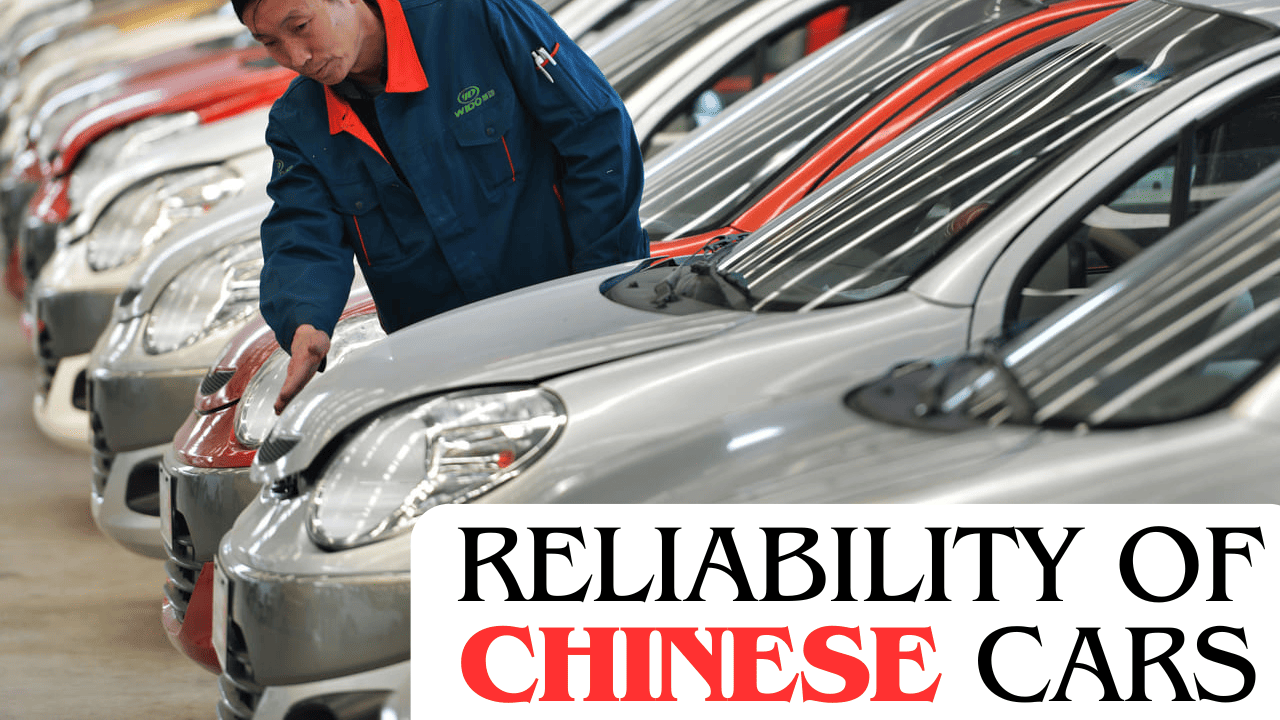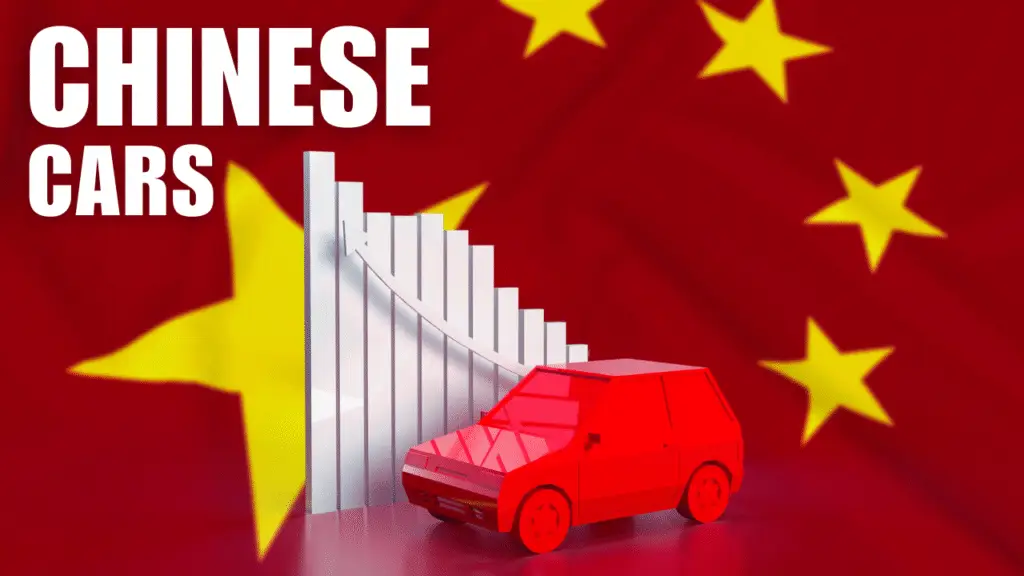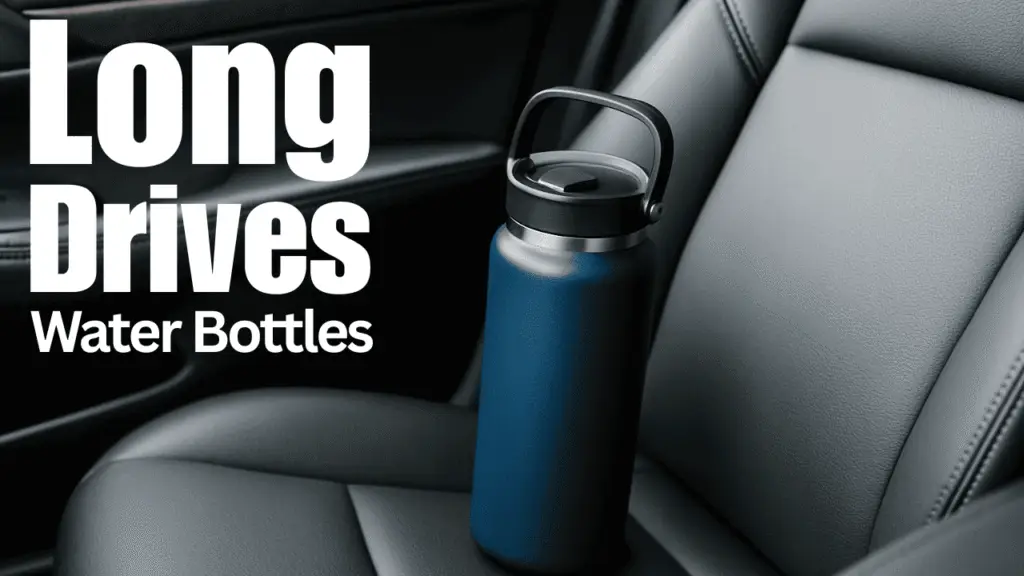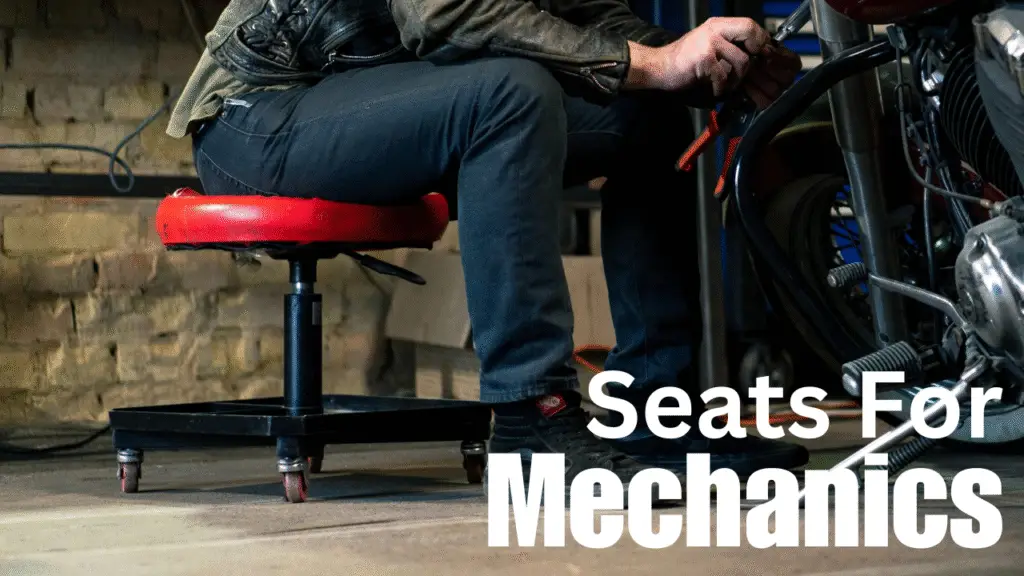China’s car industry has really come a long way in both design and tech since it first started out on shaky ground. But just how far have they actually come? Are they now at a point where you can buy their cars with confidence instead of sticking to the well-known brands? We’re noticing this change happening all over the world. However, for those who took a chance on Chinese cars early on, long-term reliability is super important. Established names like Japanese, Korean, European, and American brands have set a high standard with their solid track records. So the big question is whether Chinese brands can earn that same level of trust.
In this piece, we’ll dive into why it’s hard to pin down durability, how Chinese automakers have learned from their partnerships with international car companies, and whether brands like Geely, BYD, Chery, and MG can truly compete with the legendary reliability of Toyota, Honda, and Hyundai. We’ll also take a trip down memory lane to get a better understanding of how things have changed. So hop on this journey with us and don’t hesitate to drop us an email with your thoughts!
Historical Reliability Challenges
Creating a car that runs smoothly for ten years or longer is super tricky. Even big-name brands from the West have had a hard time keeping up with the reliability of Japanese cars. Take Fiat for example—it has this unfortunate nickname “Fix It Again, Tony” because people have experienced a lot of breakdowns with their cars. Even now, surveys still show that Fiat doesn’t measure up to Japanese brands when it comes to dependability. In the latest 2024 “What Car?” UK reliability survey, Fiat ranked 25th with a score of 88.2%—that’s way behind Toyota’s 96.1% and Lexus sitting pretty at 97.9%. And even though Ford has made some strides in recent years, it still doesn’t quite reach the levels of Toyota and Honda, which keep topping the charts for long-term reliability. This just shows how Japanese brands have set the bar high by focusing on quality for decades.
Achieving long-term reliability requires a slow and steady approach. Japanese automakers like Toyota and Honda built their reputation by making continuous improvements and avoiding radical leaps that could introduce bugs. Toyota is known for its conservative roll-out of new technology – a strategy credited for its top reliability rankings. As Consumer Reports’ Jake Fisher explains, Toyota adds new features gradually rather than all at once, which he says “helps make its vehicles more reliable”. For instance, Toyota tested its 8-speed transmission in a proven SUV before using it in the Camry, ensuring any issues were ironed out first. This cautious ethos (rooted in the Toyota Production System and Kaizen continuous improvement) means fewer surprises for owners even as models evolve.
Japanese brands also emphasize rigorous quality control in manufacturing and supplier parts. By the time a Toyota or Honda model goes on sale, its components have often been refined over multiple generations. This patient approach stood in contrast to some Western automakers that pushed cutting-edge tech quickly (sometimes at the expense of reliability). The result: in real-world data, Japanese cars routinely dominate reliability rankings while others play catch-up. Lexus, Toyota’s luxury division, and Toyota itself have topped Consumer Reports brand dependability lists for years as a “reward for [their] conservative approach to new technology”. In 2024 UK data, Japanese and Korean brands occupied 4 of the top 5 reliability spots (Lexus, Suzuki, Honda, Toyota), while traditional European/American brands filled many of the lower ranks.
Importantly, Korean automakers learned this lesson as well. Hyundai and Kia in the 1990s had a shaky quality record (early models like the Hyundai Excel were inexpensive but prone to problems). Facing backlash, Hyundai implemented drastic quality initiatives – notably introducing a 10-year/100,000-mile warranty in 1998 – signaling its commitment to durability. Over the next two decades, Hyundai/Kia steadily improved engineering and quality control. By the mid-2010s, the results were evident: Kia topped J.D. Power’s Initial Quality Study in 2016, the first non-luxury brand in 27 years to rank #1 (with just 83 problems per 100 vehicles). This was a remarkable turnaround built on persistence and learning from mistakes. Hyundai’s rise from a bargain-basement brand to a top-10 reliability contender underscores that reliability isn’t built overnight – it’s earned through consistent effort, feedback loops, and a company culture prioritizing long-term quality over short-term flash.
China’s Joint Venture Strategy & Technology Transfer
When China opened its auto market, the government mandated foreign automakers to form joint ventures (JVs) with local companies. This policy was a deliberate strategy to acquire technology and know-how for domestic industry. Over the past few decades, giants like Volkswagen, General Motors, Toyota, Honda, and others have all partnered with Chinese state-owned automakers (SAIC, FAW, Dongfeng, etc.), building cars locally and training a generation of Chinese engineers and suppliers. The JV requirement effectively forced technology transfer – Chinese firms got access to modern vehicle platforms, manufacturing processes, and quality systems by working side-by-side with established brands.
This strategy has indeed accelerated Chinese automakers’ learning curve in areas like production techniques and supply chain management. For example, Shanghai Automotive (SAIC) builds Buicks and VWs, FAW produces Audis and Toyotas, Dongfeng builds Nissans and Hondas, and so on. By observing and participating in these operations, Chinese companies gained insight into everything from engine design to paint shop quality control. A 2020 JDPower report noted that the gap in vehicle dependability between Chinese domestic brands and international brands was the smallest since 2010, reflecting how much local manufacturers have improved with acquired knowledge.
However, much of the early tech transfer was from American and German automakers (GM, VW, etc.), and not always from the absolute reliability leaders. Volkswagen’s joint ventures had scale and influence in China since the 1980s, giving Chinese partners expertise in mass production and European design. But German approach to reliability historically focuses on engineering performance and innovation, which hasn’t always equaled Toyota-level durability. In fact, luxury German marques often rank mid-pack or below in long-term reliability surveys due to complex electronics and high-stress performance parts. Thus, Chinese firms largely learned from companies that, while advanced, were not the gold standard in sheer trouble-free longevity.
Joint ventures with Japanese automakers did occur (e.g. GAC Toyota, GAC Honda, FAW Toyota), but came later and were sometimes more guarded in sharing proprietary processes. Moreover, absorbing know-how doesn’t automatically translate to replicating it. It’s one thing to see Toyota’s methods; it’s another to ingrain the obsessive quality culture that underpins them. Early on, Chinese domestic models often took the “copycat” approach, reverse-engineering foreign designs with mixed results. Without deep understanding, some copied features or designs introduced reliability issues (like early CVT transmissions or turbo engines that weren’t fully localized).
The JV era did give Chinese brands a solid foundation in basic vehicle engineering – cars coming from companies like SAIC, GAC, and BAIC today benefit from decades of partnership with foreign experts. Build quality, paint finish, and component sourcing improved dramatically compared to the crude offerings of the 1990s. Still, systematic reliability – the ability to design a car that remains solid at 100,000+ miles – requires more than just borrowed tech. It requires mindset shifts: rigorous testing cycles, supplier quality audits, aftersales feedback loops, and often a conservative philosophy on design margins. These are areas where Chinese automakers are still catching up. In essence, China’s JV strategy jump-started its car industry and closed the gap in initial build quality, but it did not instantly bestow the hard-won wisdom that brands like Toyota and Honda accumulated over decades of trial and error.
Another aspect is that JVs focused on producing for the Chinese market, where consumer expectations historically differed. Many Chinese buyers in the 2000s were first-time owners, more impressed by new features and low price than by 15-year durability. Foreign partners (aside from the Japanese) may not have emphasized extreme longevity either, since the average car ownership period in China was shorter and automakers benefit from repeat sales. Thus, the incentives to pursue “Toyota-grade” reliability were muted in the early JV years. Instead, the focus was on achieving acceptable quality and lots of features at low cost to win over domestic buyers. This dynamic is now changing as Chinese brands eye export markets and face more discerning customers at home.
Real-World Data on Reliability
How do Chinese brands actually hold up in the real world today? We can turn to owner surveys, dependability studies, and long-term tests for evidence. The data paints a mixed picture: some newer Chinese models perform reasonably well in early quality, but long-term reliability lags behind established rivals, with notable issues cropping up as the years go on.

The MG4 EV, a modern Chinese-made model (SAIC’s MG), has impressed on price and features but suffered reliability glitches. In a 2024 UK survey, the MG brand scored worst overall and the MG4 was rated the least reliable electric vehicle with just 63.8% reliability
Consider MG, the British marque now owned by China’s SAIC. MG has surged in popularity in Europe with affordable EVs and SUVs, but owners have reported many niggling problems. In a comprehensive What Car? survey of ~30,000 UK owners (cars up to 5 years old), MG was rated the most unreliable brand with a reliability score of only 76.9/100. For context, most Japanese brands scored above 95 in this survey, and even traditionally weaker brands like Fiat were around 88. MG’s new electric models were troublesome – the MG4 EV had the worst reliability of any EV, with issues ranging from software glitches to build defects, earning a mere 63.8% score. Owners complained of frequent faults and slow repairs, with some facing big out-of-warranty bills. This shows that despite modern designs, some Chinese offerings haven’t yet nailed down consistent quality in daily use.
Looking at long-term dependability data, Chinese brands still trail industry leaders but are improving. J.D. Power’s Vehicle Dependability Study (VDS) for China measures problems after 2–4 years of ownership. In 2021, it found the reliability gap between Chinese domestic brands and international brands had narrowed to just 6 problems per 100 vehicles (PP100), down from 9 a year prior. Chinese makes notably improved on engine and transmission issues that year. By 2024, however, J.D. Power noted a slight decline in overall dependability in China (attributed mainly to new high-tech features causing trouble), and warned automakers that rushing new models to market can hurt durability. Still, the trend over the last decade is positive – the gap in fundamental reliability (things like engine failures, rust, etc.) has shrunk considerably, indicating Chinese engineering is steadily maturing.
Specific brand case studies highlight the range of outcomes:
- Geely (which now owns Volvo and Lotus) has leveraged international expertise to boost quality. In a 2022 Chinese Automotive Quality report (tracking defect complaints per brand), Geely ranked 12th out of 61 brands for combustion vehicles with a score of 157 (lower is better) – nearly on par with FAW-Toyota’s score of 156. This put Geely above many joint-venture brands and ahead of domestic rivals like Chery and Haval. Geely’s recent models, like the Boyue (marketed as Proton X70 in some countries), have been praised for solid build and decent reliability in their first few years. However, Geely’s long-term durability in harsh use is still being proven – it’s one thing to match Toyota’s 3-year dependability, another to match 10+ years. There isn’t yet extensive data on a Geely with 150,000+ miles to compare against a Honda CR-V of the same mileage, for example.
- BYD, China’s leading EV maker, shows strength in some metrics. In that 2022 quality ranking, BYD’s electric models performed very well – BYD was the 3rd-ranked EV brand with a defect score of 127, far better than Tesla’s 227 (Tesla came in near the bottom in China). BYD’s focus on vertical integration (they make their own batteries, electronics, etc.) may be helping control quality. Additionally, EVs have fewer moving parts, potentially reducing traditional maintenance issues. BYD owners globally have generally reported satisfaction in the early years, and the company offers long battery warranties (8 years or more). The open question is how BYD cars hold up after, say, 8-10 years of use or high mileage on the battery – those data will emerge in the coming years. But initial indicators suggest BYD might become the first Chinese brand to genuinely challenge incumbents on reliability, at least within the EV category.
- Chery and its upmarket brand Exeed have struggled with consistency. Chery was one of the first Chinese exporters (selling the cheap Tiggo and QQ overseas in the 2000s) and gained a poor reputation for quality back then. The company claims to have improved significantly. Indeed, J.D. Power’s 2023 China Initial Quality Study showed Chery as the top-ranking Chinese brand in initial quality. However, when it comes to dependability after a few years, Chery still fared poorly in the 2022 defect report – Chery was 41st (score 184) and its Exeed offshoot 52nd (204), well below the industry average. Common complaints on Chery models (like the Tiggo SUV series) include engine starting issues, electrical glitches, and trim durability problems. For instance, the Chery J11 (sold in some markets as Tiggo) had recurring starter failures that frustrated owners until a redesigned relay was provided. These issues echo the experience of early Korean cars – functional and cheap, but prone to small failures that undercut owner confidence.
- Great Wall Motor (GWM), known for Haval SUVs and Wingle/Steed pickups, also illustrates growing pains. GWM was one of the first Chinese brands to sell in Australia around 2009. Early on, they faced major problems: in 2012–2014, Great Wall had to recall over 9,000 vehicles in Australia for issues ranging from engine wiring faults to the infamous discovery of asbestos in engine gaskets. Those incidents severely damaged their reputation at the time. However, GWM has since improved its products (with help from foreign consultants) and now offers a 7-year warranty in some markets. In recent Chinese quality rankings, Great Wall’s new models like the Haval H6 SUV and GWM Tank 4×4 have middle-of-pack scores (Tank ranked 15th with 168, Haval brand around 31st) – an improvement from the bottom, but still behind Japanese competitors. Owners of newer Haval SUVs report that the cars drive well and feel solid new, but some experience more issues as mileage climbs (e.g. premature suspension wear, interior rattles, and occasional engine sensor failures). Long-term durability for Great Wall products (beyond the warranty period) is not yet proven and remains a concern among savvy buyers.
In contrast, when we look at models from Toyota, Honda, or Hyundai in these same surveys, they tend to show far fewer problems. In the UK What Car? study, Toyota and Honda were near the very top (Toyota 96.1%, Honda 96.6% reliability). In China’s defect monitoring, joint-venture Toyotas and Hondas were among the best performers (Dongfeng-Honda was #1). And in J.D. Power’s 3-year dependability rankings, brands like Buick and Hyundai (built in China) have often outranked local Chinese brands, reflecting the benefit of more mature design processes. The key takeaway is that Chinese brands as a group are approaching parity in initial quality (the first 90 days to 1 year of ownership can be reasonably trouble-free, as assembly quality is much improved). But for long-term reliability (5+ years), the data still shows a noticeable gap – more frequency of repairs, more serious component failures, and more variation in quality lot-to-lot compared to Japanese and top Korean makes.
Lessons from Proton’s Downfall
The cautionary tale of Proton (Malaysia’s national carmaker) offers a glimpse into what can happen when a young automaker tries to stand on its own without fully mastering reliability. Proton started strong in the 1980s by rebadging tried-and-true Mitsubishi models. Early Proton cars like the Saga and Wira were essentially Mitsubishis underneath – benefiting from Japanese engineering. They were affordable and reasonably robust, quickly gaining popularity in Southeast Asia and even the UK as simple, reliable budget cars. In fact, Proton in the 1990s was often compared to Hyundai or Kia as a rising brand from Asia.
However, as Proton moved to develop its indigenous models in the 2000s (e.g. the Proton Waja, Gen-2, Exora), cracks began to show. Without Mitsubishi’s oversight, Proton’s build quality and reliability took a nosedive. Common issues like power window mechanisms failing became a running joke among Malaysians. More critically, engines (the in-house “CamPro” engines) and electronics on those self-developed models had frequent problems. By the mid-2010s, Proton’s reputation was badly tarnished. Sales plummeted from over 166,000 units in 2005 to around 72,000 by 2016.
A UK blogger analyzing Proton’s rise and fall noted: “the quality of the later indigenous products was not up to the same standards as the original Mitsubishi-based cars”. In other words, once Proton left the shadow of Mitsubishi’s engineering, it failed to maintain the same reliability standards. At the same time, competitors caught up – the budget car market filled with new entrants that were higher-quality. The “Korean trio” (Hyundai, Kia, Daewoo/Chevrolet) improved rapidly and “largely conquered Proton’s traditional core demographic with affordable, reliable and attractive ranges that make Protons seem dated”. Proton went from being a big fish in a small pond to a relic virtually overnight, as consumers realized there were better alternatives.
What went wrong? Proton’s experience underscores a few lessons:
- Licensing or copying tech is not enough – you must also cultivate the engineering depth and quality control to sustain it. Proton could bolt together a Mitsubishi-designed car reliably, but when it tried to design its own components, it lacked the rigorous testing and supplier discipline needed.
- Rushing to innovate can backfire. Proton introduced its own engines and features quickly to assert independence, but these were not fully debugged. This is relevant to Chinese automakers today who are eager to prove themselves with cutting-edge EV tech and complex infotainment; if they do not validate new systems thoroughly, they risk similar reliability stumbles.
- Brand damage is hard to reverse. Once customers had a bad experience with Proton (e.g. repeated breakdowns or annoyances), they deserted the brand, and luring them back was nearly impossible. Proton eventually had to seek foreign help again – today it’s 49% owned by China’s Geely, essentially coming full circle to relying on an experienced partner for technology.
For Chinese automakers, Proton’s downfall is a warning that consistent reliability must precede prideful independence. Many Chinese brands initially partnered or licensed from foreigners (much like Proton did with Mitsubishi). The smart ones will continue incorporating foreign expertise until they are absolutely sure their in-house systems can go the distance. It’s notable that even after acquiring Volvo, Geely let Volvo lead engineering for shared platforms (like the CMA platform) rather than immediately replacing everything with its own designs. There’s an understanding that reliability credibility is hard to gain and easy to lose. Planned obsolescence or cutting corners for short-term gain can doom a brand’s long-term prospects – Proton showed that once consumers label your cars “low quality,” sales collapse.
Comparison to Korean Automakers’ Success
There’s a strong parallel between today’s Chinese carmakers and the trajectory of Korean automakers (Hyundai and Kia) 20–30 years ago. The Koreans provide a playbook for how a new auto industry can shed its unreliable image and become a global quality contender – a path the Chinese are keen to emulate.
Early years (1970s–1980s): Hyundai and Kia began by partnering with Japanese firms. Hyundai’s first mass-production car (the Pony) in the 1970s used a Mitsubishi powertrain, and Kia built Mazda-derived vehicles. This gave them a foothold in technology. However, when Hyundai entered the U.S. market in 1986 with the Excel, the car’s low price attracted many but its poor reliability (transmissions and engines failing young) quickly tarnished the brand. By the early 1990s, Hyundai was synonymous with “cheap but unreliable.”
Turning point: The Koreans realized that to compete globally, they had to fix quality. Hyundai’s dramatic step of offering the industry’s first 10-year powertrain warranty in the late 90s was backed by internal reforms – new research centers, hiring Japanese quality consultants, and overhauling manufacturing. It took time, but improvements showed in the 2000s. Hyundai and Kia also scaled back on radical changes, opting to introduce new tech cautiously (for example, Hyundai was slower to adopt direct-injection or dual-clutch gearboxes than some Europeans, preferring to wait until the bugs were worked out).
2000s–2010s: Steady improvement led to measurable results. By 2012, Hyundai and Kia models were scoring above average in reliability. In a striking validation, Consumer Reports in 2015 and 2016 ranked Kia among the top reliable brands (alongside Toyota and Lexus). And in J.D. Power’s 2016 U.S. Initial Quality Study, Kia and Hyundai took the top two ranks industry-wide. The Korean brands had effectively gone from bottom-dwellers to reliability leaders in about two decades, thanks to consistent focus on build quality, warranty feedback loops (long warranties forced them to quickly address any pattern of defects to avoid huge repair costs), and investing heavily in engineering.
Chinese automakers are now following a similar arc, but at an accelerated pace. Key steps they are taking or need to take, mirroring the Korean experience, include:
- Hire global talent and learn from others: Hyundai famously poached experts from Toyota and European makers to improve its design and quality. Similarly, Chinese firms have been recruiting engineers from established companies. Geely’s acquisition of Volvo brought in a wealth of knowledge. Teams at BYD, NIO, etc., include veterans from Audi, Tesla, and more. This cross-pollination can help instill a reliability mindset.
- Offer strong warranties: Just as Hyundai/Kia’s long warranty boosted consumer confidence (and forced internal accountability), some Chinese brands are now offering extended warranties in export markets. For instance, MG in Europe provides 7-year warranties, and GWM offers 5-7 year warranties in markets like Australia. These will compel the companies to improve durability or suffer financially from claims. Over time, a record of honoring warranties also builds trust.
- Improve step by step: Rather than trying to outdo Toyota overnight, focus on incremental gains. Early Korean cars improved things like rustproofing, then powertrain, then electronics, gradually closing gaps. Chinese brands are doing similarly – each new model generation tends to have visibly better finish and fewer issues than the last. Great Wall’s latest H6 is far more robust than its 2010-era Haval H3, for example. Patience and continuous improvement are crucial; those who seek a quick fix (like a revolutionary but unproven new engine) risk setbacks.
- Leverage initial quality into long-term quality: The Koreans found that achieving high initial quality (few defects at delivery) was the gateway to long-term reliability. Once manufacturing processes were refined to produce consistent cars, it reduced the random early failures that can cascade into later problems. Chinese automakers have made big gains here – many now score decently in initial quality surveys (Changan, for instance, ranked #1 among Chinese brands in J.D. Power’s China Initial Quality Study). The challenge now is to extend that quality through the lifecycle via better parts durability and aftersales support.
- Brand repositioning and confidence: Hyundai and Kia improved reliability by the 2010s, but it took bold moves (like Hyundai launching the Genesis luxury line) to convince the public that the old stigma was gone. Chinese brands will likely need similar rebranding or standout products to reshape perceptions. We’re seeing this with new electric vehicles – Chinese EVs like the NIO ES6 or BYD Han are high-tech showcases that, if they prove reliable, can redefine their marques in consumers’ minds. The Koreans used design and feature leadership in the 2010s (think Kia’s sports designs under Peter Schreyer) to grab attention away from past quality woes; Chinese firms are using tech and EV leadership to do the same now.
In summary, the Koreans demonstrated that reliability gaps can be closed given time and commitment. They showed it’s possible to transform from selling cars that buyers treated as disposable, to selling cars that outrank some Toyotas in dependability surveys. Chinese automakers appear to be roughly a decade into a similar journey. Some, like GAC (Trumpchi) and Changan, are already known in China for improving quality rapidly – GAC even topped certain quality rankings above joint-venture brands. If Chinese firms continue to invest in R&D, enforce stricter quality control, and prioritize reliability even when it’s not glamorous, they can follow Hyundai and Kia’s footsteps. The key is consistency – one or two good models won’t erase all doubts, but a track record over multiple model cycles will.
Market Perceptions & Buying Trends
Consumer perception often lags reality. Even as Chinese cars improve, many buyers remain skeptical of their long-term reliability – and this significantly affects buying and ownership patterns.
One notable trend is that some buyers treat Chinese cars as short-term or disposable purchases. Knowing the vehicle was cheaper upfront, these owners plan to use it during the warranty period and then trade it in or sell it before potential major problems arise. Industry observers have noted that Chinese cars generally have lower resale values than Japanese or European cars, precisely because of reliability and durability concerns. Essentially, the market “prices in” an expectation that a Chinese-made car won’t last as long without issues, so used car buyers demand steep discounts.
For example, in the Middle East and South Asia, it’s not uncommon to hear a buyer say they’ll enjoy a feature-packed Chinese SUV for five years and aren’t worried about year 10 because they don’t intend to keep it that long. In markets like Africa, some fleet buyers choose Chinese vans or pickups because they’re half the price of a Toyota; even if they only last half as long, they see it as cost-neutral. This mindset means minor reliability annoyances (a few extra trips to the dealer for warranty fixes) are tolerated as a trade-off for the low purchase price. However, it also means Chinese brands haven’t yet built the kind of loyalty that Toyota enjoys, where second or third owners seek them out for their reputed longevity.
Data on resale values supports these perceptions. A 2024 report in China found that after three years, Chinese brand cars retained about 57.3% of their value on average, whereas Japanese cars retained 60% and German cars 62.4%. While Chinese residuals in their home market are not terrible (and notably even better than American or French brands there), they still lag a bit behind Japan. In overseas markets, the gap is often larger: for instance, in the UAE, Japanese cars hold far better resale value than Chinese cars “due to their perceived reliability and durability”, making Japanese vehicles a safer investment for long-term ownership. Similarly, a comparison for buyers in the UK or Australia will show a 5-year-old Honda or Hyundai retains much more value than a 5-year-old MG or Great Wall, reflecting the confidence (or lack thereof) in how those cars age.
Consumers also factor in warranty and support when judging these cars. Many Chinese automakers offer lengthy warranties now (5-7 years is common) to allay fears. As long as the car is under warranty, buyers are less concerned about reliability because repairs are covered – this feeds the “just use it for the warranty period” approach. However, if warranty service quality is poor (e.g. slow parts supply, few service centers), it can backfire. MG in some European countries, for instance, has faced criticism that while issues are fixed under warranty, the wait times for parts were long, leaving owners without their car for weeks. This undermines confidence and hurts the brand’s reputation.
Customer confidence surveys consistently show that buyers trust Japanese and Korean brands more for long-term use. In one survey of UAE car buyers, 70% said they would prefer a used Japanese car over a new Chinese car, citing worries about reliability and resale (even if the new Chinese car had more features). In an Indonesian study on brand image, Chinese brands rated lower on perceived quality and resale, impacting customer satisfaction and loyalty. These perceptions create a vicious cycle: lower resale values and cautious short-term buying mean Chinese brands struggle to break into the more lucrative segments of the market (like business fleets or customers who buy a car as a long-term family asset).
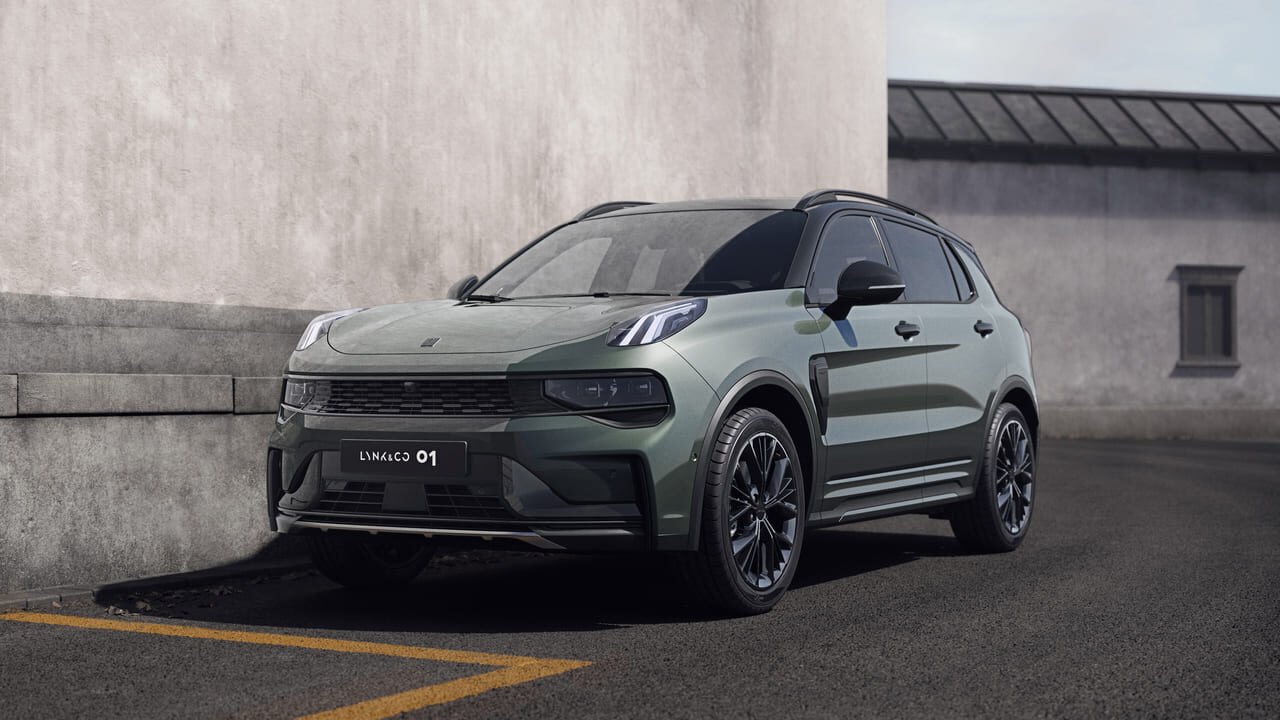
That said, perceptions can change. We saw with Hyundai – in the 1990s, used Hyundais had abysmal resale and many buyers only leased or kept them briefly. By the 2010s, Hyundai’s reputation improved and resale values climbed accordingly. Chinese brands are aiming for a similar shift. The introduction of global models that earn safety awards and decent reliability scores could start turning the tide. For example, if a model like the ORA Good Cat (GWM Ora) EV or Geely’s Lynk & Co 01 gets strong reliability feedback in Europe over a few years, secondhand buyers will become more willing to consider them, which in turn boosts residual value and new-buyer confidence.
Right now, though, consumer wariness persists. Buyers are essentially asking: “Am I getting a great deal upfront but paying for it later with problems and low resale?” Those who see a Chinese car as a short-term appliance might say yes, it’s worth it. Those who think long-term often stick to Japanese/Korean options. Auto market experts emphasize that to truly compete globally, Chinese automakers must break the stigma by proving their cars can go 100,000+ miles with minimal headaches. Only then will perceptions shift from “cheap substitute” to “genuine alternative.”
Future Outlook: Can Chinese Brands Achieve Toyota-Level Durability?
The big question is whether Chinese automakers can genuinely join the top ranks of long-term reliability – matching the durability of a Toyota – or if they will remain positioned as value-oriented alternatives with possibly shorter lifespans. Based on current trends, there is reason to be cautiously optimistic, but significant challenges remain.
Why they could succeed: Chinese companies have immense resources and have shown they can improve at a rapid pace. They are investing heavily in R&D, quality control, and global testing. Many have built state-of-the-art engineering centers (often hiring ex-Toyota or ex-BMW personnel to run them) and are implementing stricter quality systems. For instance, Changan (one of China’s big four automakers) now runs its new models through millions of kilometers of testing and has reportedly cut initial defects to levels on par with Toyota. GAC, which partners with Toyota and Honda, has absorbed those partners’ methods and consistently ranks at the top of quality surveys in China. If these automakers apply the same diligence to durability, their products will inevitably get better. The narrowing of the dependability gap to just a few PP100 in recent J.D. Power studies suggests that within the first 3-4 years of ownership, Chinese cars are nearly as dependable as international brands. The task is extending that reliability out to 10+ years.
Moreover, the transition to electric vehicles (EVs) provides something of a “reset” opportunity. EVs have fundamentally simpler drivetrains than gasoline cars – no complex multi-gear transmissions, fewer moving parts, less vibration – which could make it easier to achieve durability if the battery and electronics are robust. Notably, Chinese brands are currently at the forefront of EV development. BYD, NIO, Xpeng, Geely’s Zeekr, SAIC’s MG/Maxus – all are pushing EVs globally. BYD’s strong showing in EV reliability rankings (best of any global EV in one Chinese study) is promising. If Chinese automakers can build a reputation for reliable electric powertrains (where even Toyota has limited experience compared to its hybrid tech), they could leapfrog in perception. Battery longevity will be key here – offering warranties of 8 years/160,000 km (which many do) and demonstrating through data that their battery packs still hold, say, 80% capacity after that period, will go a long way to convincing skeptics. Additionally, Chinese firms are pioneers in some new technologies like LFP batteries, which trade some energy density for greater longevity and safety – a philosophical choice in favor of durability.
Why they might struggle or fail: The flip side is that some Chinese manufacturers might fall into the trap of “planned obsolescence.” The domestic Chinese market has been hyper-competitive and model cycles are very short (cars are updated or replaced every 4-5 years, which is faster than the global norm). J.D. Power cautioned that the rapid pace of new model launches in China, with continuously shortened development cycles, is a risk for long-term reliability. Automakers under pressure to release the latest technology quickly may not do the extensive validation needed for trouble-free longevity. If the priority remains on having the newest gadgets and designs (to lure buyers in a fast-growing market), reliability can take a back seat. This is a cultural challenge: companies need to shift from a “sell it now” mentality to a “will it still delight the customer in 10 years” mentality. Japanese carmakers made that shift decades ago, embedding durability into their design criteria. It’s unclear if all Chinese brands have fully done so yet.
Additionally, supply chain and parts quality could hold some back. Reliability at scale depends on a vast network of suppliers making consistent, high-quality parts (from tiny sensors to major castings). Japan’s supplier networks are famed for their quality focus. China’s supply base is improving but still has variability – e.g. one batch of electronics might have a higher failure rate due to a subcontractor issue. Ensuring every bolt and chip is up to standard across dozens of suppliers is a non-trivial task that only experience and strict standards can solve. If Chinese OEMs continue to use some cheaper suppliers to save cost, they may inadvertently undermine longevity.
Competition and comparisons will also intensify. The benchmark isn’t static: Toyota, Honda, and Hyundai are not standing still. They continue to refine reliability (and Toyota is finally moving into EVs cautiously with durability in mind). It’s possible that Chinese brands become “good enough” in reliability for 90% of customers, even if they never quite match the absolute longevity of a Toyota Land Cruiser (famed for running 25 years in the desert). In such a scenario, Chinese cars wouldn’t need to last 20 years without failure – if they last 10 relatively trouble-free years, that covers the use case of most buyers today. In effect, the bar for practical reliability might be lower than the bar Toyota has historically set, given how consumer habits have changed (people replace cars more frequently now than in the past).
Still, to earn the trust of conservative buyers and command brand loyalty, reaching for that high bar is important. We might see a segmentation among Chinese automakers: some will emphasize reliability as a selling point and invest heavily to achieve it, while others might consciously remain in the low-cost, “good for 5-8 years” category. For example, Great Wall’s Tank and Haval brands seem to be trying to build tougher, off-road-capable SUVs aimed at durability (even advertising testing in extreme conditions), whereas some smaller EV startups might be content if their city cars last the length of a lease and then encourage customers to upgrade.
In conclusion, Chinese car brands absolutely have the potential to break into the long-term reliability game – the progress made in just the past decade is evidence of that potential. Brands like Geely (with Volvo’s influence) and BYD (with its methodical EV engineering) could very well produce models in the next few years that independent tests and owner data confirm to be as durably built as a Toyota or Honda. However, it will take time and proof. As one J.D. Power China executive noted, automakers must balance innovation speed with reliability, because as Chinese brands push into overseas markets, “the long-term reliability of their products will also affect resale value and new-vehicle sales in overseas markets”. In other words, reliability isn’t just an afterthought – it will determine their global success.
For now, buyers should approach Chinese cars with eyes open: they offer tremendous value and increasingly good initial quality, but true long-term reliability is the final hurdle they have yet to conclusively clear. If Chinese manufacturers learn the lessons of history – the Fiats and Fords that stumbled, the Protons that fell from grace, and the Hyundais that persevered and triumphed – there’s no technical reason they can’t achieve parity in durability. The next 5-10 years will likely see some Chinese brands earning a reputation for solid longevity, while others may reinforce the stereotype of being flashy but short-lived. One thing is certain: the race is on, and the entire industry is watching closely, because a Chinese brand that can equal Toyota’s legendary durability would be a game-changer in the global auto market.
If you enjoyed this post, you might want to check out our article, “Chinese SUVs Reliability vs. European Brands: How Do They Compare?” You can dive into our site for detailed car reviews, helpful buying tips, and the latest news in the car world. Feel free to take your time browsing, and don’t forget to bookmark our homepage for updates down the line!
- Affordable Trunk Organizers That Every Driver Needs in 2025
- Why Chinese Cars Now Win Buyers
- Best Insulated Water Bottles for Long Drives in 2025
- Best Car Covers for All-Weather Protection (2025 Guide)
- Best Mini Rolling Mechanic Seats for Home Garages in 2025
*Disclaimer: This website provides automotive content for informational purposes only and should not be considered professional advice. While we strive for accuracy, we do not guarantee the reliability or suitability of any vehicle or product mentioned—always conduct your own research before making purchasing decisions. Additionally, some links on this site are affiliate links, meaning we may earn a commission if you make a purchase, at no extra cost to you.

